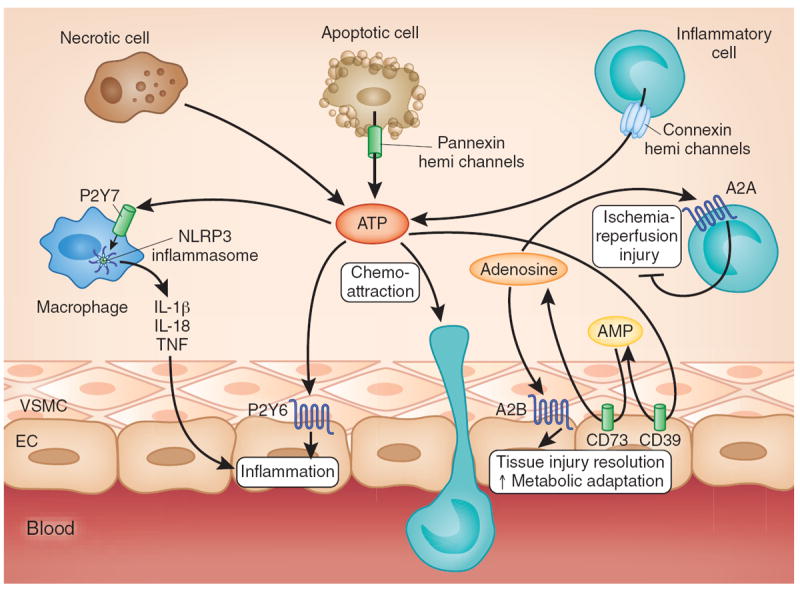Figure 4.

Nucleotide and nucleoside signaling during ischemia and reperfusion. Multiple cell types release ATP during ischemia and reperfusion (for example, spillover from necrotic cells or controlled release through pannexin hemichannels from apoptotic cells or connexin hemichannels from activated inflammatory cells)59,114,119. Subsequent binding of ATP to P2 receptors enhances pathological inflammation and tissue injury, for example, through P2X7-dependent Nlrp3 inflammasome activation13 and P2Y6-dependent enhancement of vascular inflammation117. ATP can be rapidly converted to adenosine through the ecto-apyrase CD39 (conversion of ATP to AMP) and subsequently by the ecto-5′ nucleotidase CD73 (conversion of AMP to adenosine). Adenosine signaling dampens sterile inflammation, enhances metabolic adaptation to limited oxygen availability and promotes the resolution of injury through activation of A2A adenosine receptors expressed on inflammatory cells and activation of A2B adenosine receptors expressed on tissue-resident cells (for example, cardiac myocytes, vascular endothelia or intestinal epithelia). EC, endothelial cell; VSMC, vascular smooth muscle cell.
